Greeks in Chicago
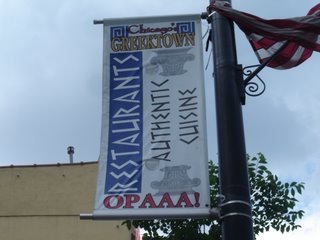 Most communities in America do not intentionally create enclaves for ethnic groups. Lucky for me, Chicago does have a Greektown and I was able to walk around my fellow malakas.
Most communities in America do not intentionally create enclaves for ethnic groups. Lucky for me, Chicago does have a Greektown and I was able to walk around my fellow malakas. Greek letters are all over the place, and presumably, Greeks too.
Greek letters are all over the place, and presumably, Greeks too.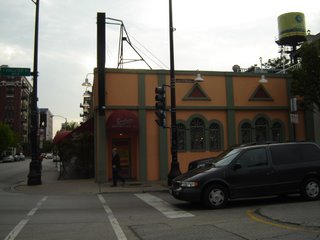 One of the things I've missed the most about New York is good Greek food. Luckily, I was able to find some great places to eat. One of them is called Santorini, after the Greek island. Located at West Adams Street at Halsted Street, it offers great tzatziki and a fabulous Greek menu. On top of that, the restaurant uses organic olive oil and oregano from a family farm in Sparta. You know how I love organic food.
One of the things I've missed the most about New York is good Greek food. Luckily, I was able to find some great places to eat. One of them is called Santorini, after the Greek island. Located at West Adams Street at Halsted Street, it offers great tzatziki and a fabulous Greek menu. On top of that, the restaurant uses organic olive oil and oregano from a family farm in Sparta. You know how I love organic food.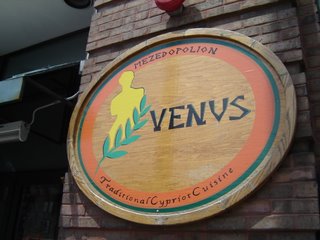 I wanted to take advantage of good Greek food as much as possible while in town, so I made repeated trips to the area. I found myself at Venus, which serves Greek-Cypriot cuisine on Jackson Boulevard and Halsted Street.
I wanted to take advantage of good Greek food as much as possible while in town, so I made repeated trips to the area. I found myself at Venus, which serves Greek-Cypriot cuisine on Jackson Boulevard and Halsted Street. The decor was great and the waiter seemed right off the boat.
The decor was great and the waiter seemed right off the boat.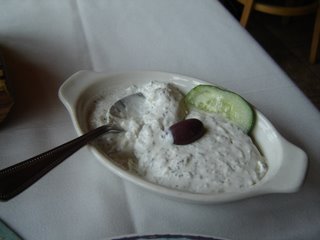 Yearning for more good tzatziki, I had to try something similar. Talatouri, also based on yogurt, had a fantastic taste to it. Apparently, this appetizer is home grown from Cyprus.
Yearning for more good tzatziki, I had to try something similar. Talatouri, also based on yogurt, had a fantastic taste to it. Apparently, this appetizer is home grown from Cyprus. I of course, could not resist some olives.
I of course, could not resist some olives.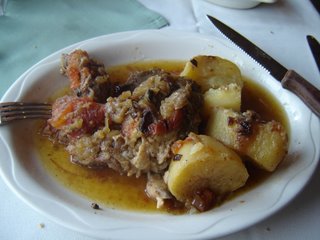 But the main event was the house's specialty, the kleftiko, which has lamb slow roasted for six hours and served in tin foil to preserve the juices that come with the preparation. Man, it was an amazing dish. One of the best meals I've ever had.
But the main event was the house's specialty, the kleftiko, which has lamb slow roasted for six hours and served in tin foil to preserve the juices that come with the preparation. Man, it was an amazing dish. One of the best meals I've ever had. I went to the nearby Hellenic Museum and Cultural Center, located on West Adams Street and Halsted. The center's mission is to serve as "the nation's foremost center of Hellenic history, culture and the arts where the public can explore the legacy of the Greek immigrant experience in America and examine the influence of the Hellenic people and culture from antiquity to the present".
I went to the nearby Hellenic Museum and Cultural Center, located on West Adams Street and Halsted. The center's mission is to serve as "the nation's foremost center of Hellenic history, culture and the arts where the public can explore the legacy of the Greek immigrant experience in America and examine the influence of the Hellenic people and culture from antiquity to the present". Getting there is tricky. And what I mean that is when you enter the hallway, you have no clue what to do. There is a sign at the door that tells you to dial 4, 0, 0 and wait for a staff member to show it. It was really strange.
Getting there is tricky. And what I mean that is when you enter the hallway, you have no clue what to do. There is a sign at the door that tells you to dial 4, 0, 0 and wait for a staff member to show it. It was really strange. The museum is in an office building. Getting there is kind of like going on a job interview. It even has doors like a temp agency's.
The museum is in an office building. Getting there is kind of like going on a job interview. It even has doors like a temp agency's.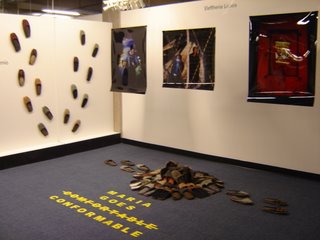 The main exhibit, "Penelopeia: The Other Journey, e-migration", including work from Greek, Lebanon, Portugal, and Sweden uses the ancient story of the Odyssey to talk about the American immigrant's experience.
The main exhibit, "Penelopeia: The Other Journey, e-migration", including work from Greek, Lebanon, Portugal, and Sweden uses the ancient story of the Odyssey to talk about the American immigrant's experience. One interesting work comes from Rita Antonio of Portugal titled "Maria Goes Comformable" (2006). The theme of this, according to the materials, is that "there is no escape for women as long as they wear the shoes of bondage".
One interesting work comes from Rita Antonio of Portugal titled "Maria Goes Comformable" (2006). The theme of this, according to the materials, is that "there is no escape for women as long as they wear the shoes of bondage".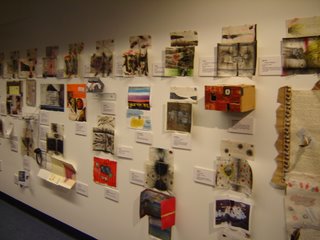 Various artists create letters and postcards of the "immigrant experience".
Various artists create letters and postcards of the "immigrant experience".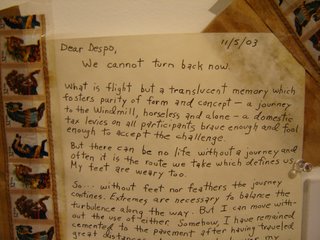 One piece by Danielle Cammarota titled "We Cannot Turn Back Now"which as a theme of journey, both mental and tangible.
One piece by Danielle Cammarota titled "We Cannot Turn Back Now"which as a theme of journey, both mental and tangible.
A very interesting work titled "...instead of dialogue..." is included in the collection.
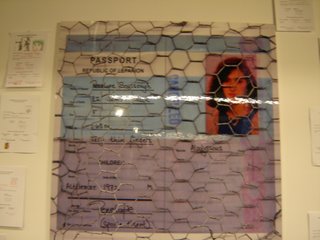 Mai Ghoussoub of Lebanon puts a visa/passport behind bars, because it's common in Middle Eastern/Muslim countries that women cannot get them without a husband's consent.
Mai Ghoussoub of Lebanon puts a visa/passport behind bars, because it's common in Middle Eastern/Muslim countries that women cannot get them without a husband's consent. Visitors are encouraged to write their own visas, and open themselves up to denial.
Visitors are encouraged to write their own visas, and open themselves up to denial.Of all of the Greek-type things I've seen, this was the most confusing, and interesting at the same time, exhibit. It is so focused on issues of today that it seemed very fresh and new. Non-Greek lovers of art would appreciate it. It's not talking about ancient Greek or the glory of the Byzantine at all. It's quite an interesting, and free, experience.
Greektown was good for my brain and my belly.

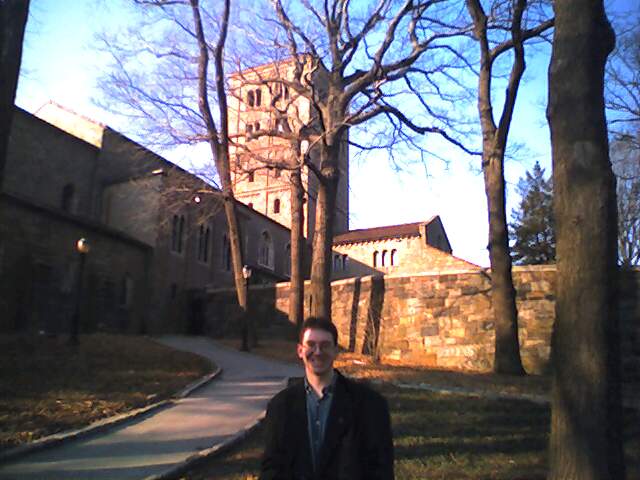

0 Comments:
Post a Comment
|<< Home